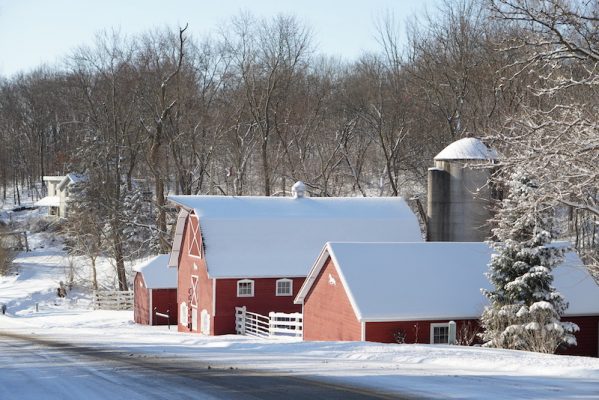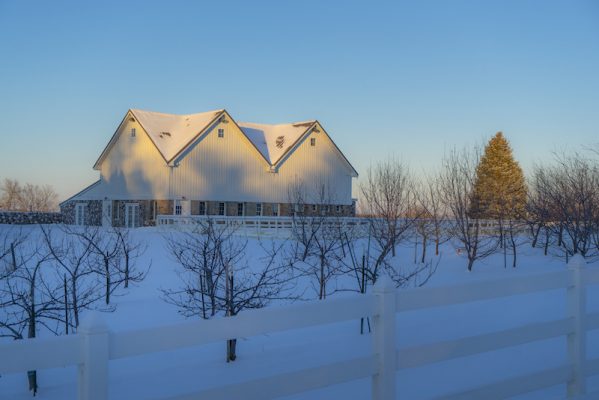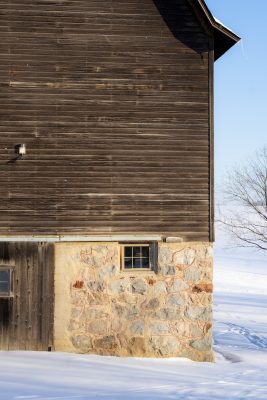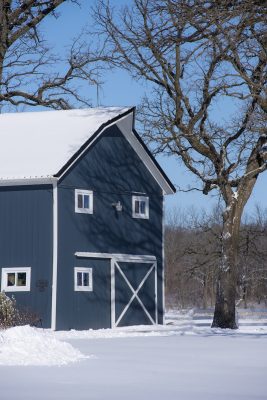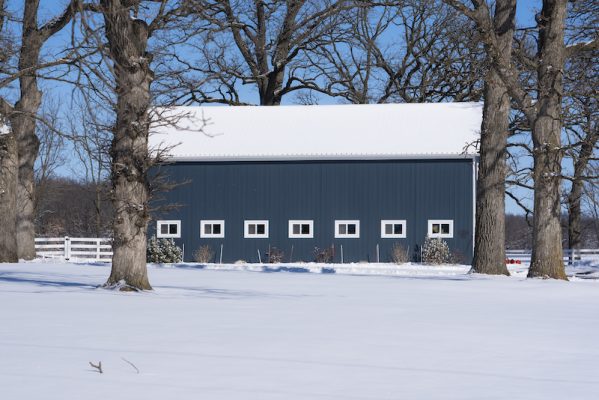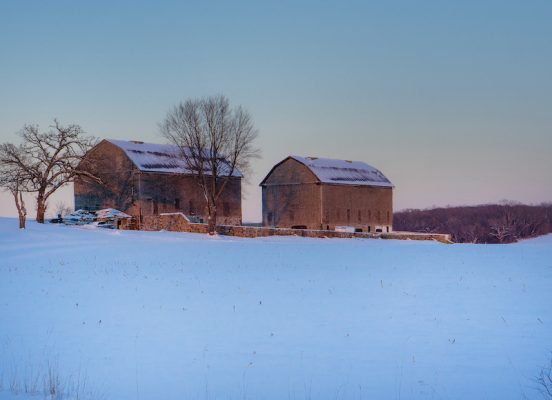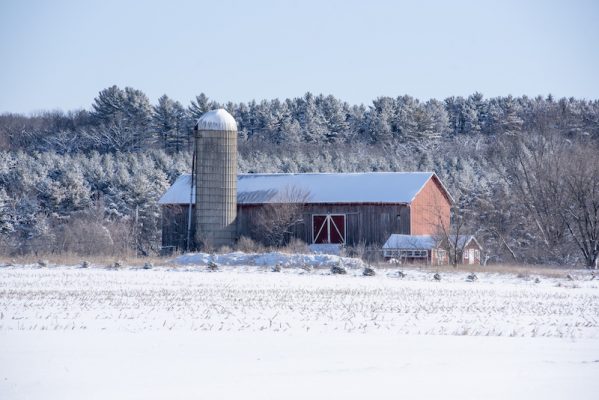By Anne Morrissy | Photos by Holly Leitner
Before the Geneva Lake area became the fashionable resort community and tourist destination it remains to this day, the rich soil and strong growing season here drew pioneers from New England and Europe, who came to Walworth County to build farms and start new lives. Today, many families in the community continue this farming tradition, and some of these farms make use of historic barns that were built in the 19th and early 20th century by the original pioneer settlers of this area. These barns serve as a beautiful reminder of Wisconsin’s agricultural heritage, and give a glimpse into the area’s history, one hand-sawn board at a time.
Taggart Farm
Located between Geneva Lake and Lake Como, this distinctive, gable-roofed barn was built prior to 1891, when it was owned by the Nohelty family, in what was at the time a predominantly Irish area of the county.
In 1940, at the age of 7, Sturges P. Taggart, Jr., (1933-2014) moved with his family to the farm. Taggart would go on to become a well- known local leader. In 1968, he married his wife Judie on the property, and together they raised a family, living on the farm until 2006. Taggart served many roles in the community throughout the years. He was the charter president of the Lake Geneva Jaycees, and in that role, he served as the emcee for the Venetian Festival Boat Parade and Fireworks for 5o years. He also served as the president of the Geneva Lakes Family YMCA and sat on the board of Oak Hill Cemetery. Later, Taggart served as an alderman in the city of Lake Geneva until his death in 2014 at the age of 81. Though the farm has passed to new owners, many locals still refer to it as the “Taggart farm.”
White River
This 195-acre farm northeast of Lake Geneva along the White River was established in the 1880s, and owned by the Malsch family from 1907 to 1967. The next owner of the farm was Duane Clark, who donated the property in 2014 to the Geneva Lake Conservancy and Walworth County. Today, the historic cedar barn is part of the White River County Park, and is a well-loved site appreciated by the many hikers, kayakers and cross-country skiers who pass through the park each year. Future long-range plans include the conversion of the barn into a nature center.
Pike Farm
This farm, located at the intersection of North Walworth Road and Six Corners Road, south of Delavan Lake, was established prior to 1857, during the earliest waves of white settlement in the area.
In the 1920s, the property was purchased by Chicago native and Delavan Lake summer resident Charles B. Goes, Jr. as a place to keep ponies and show horses for pleasure riding, as well as raise chickens and goats. Renamed “Pike Farm,” (a nod to its owner’s nickname), it remained in the Goes family until 2010. The barn has since undergone renovations, including residing, but retains its distinctive roof line and barn door. It remains in private ownership.
Twin Barns
The iconic twin barns, located east of Fontana on County Highway BB, were built by Chicagoan Edward Ayer in 1901 on a portion of his more than 1,200 acres of land abutting Geneva Lake. The gambrel-roofed barns were built of Oregon Fir on top of stone foundations, and finished in gray shake cladding. The east barn originally housed beef cattle and the west barn was reserved for dairy cattle. A mile-long stone fence enclosed the area between the two barns. Ayer sold the farm in 1918 and it has had a series of owners over the past century.

